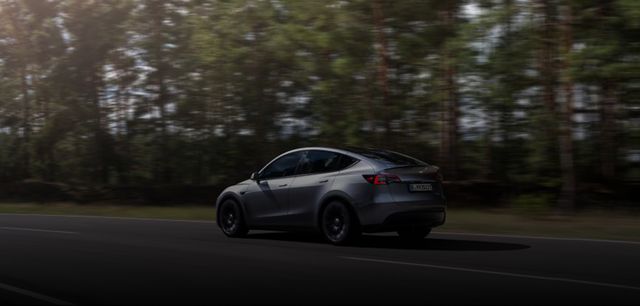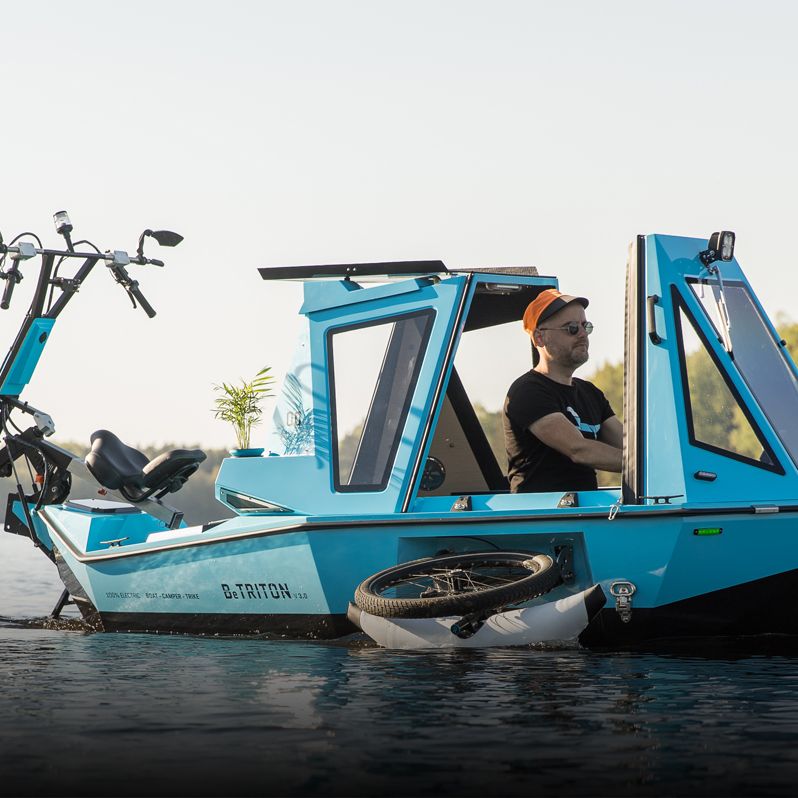6 april 2023
How does a vehicle become as streamlined as possible? This question is becoming ever more pressing in the age of electric mobility. The lower the air resistance, the less energy the car needs. This article addresses the means and methods which can be used to make cars aerodynamic.
The relationship between air resistance and fuel consumption
If it is to move, a vehicle needs to overcome various forms of resistance. Whereas at low speeds it is rolling resistance, which is determined by the weight of the car, that plays the major role, as of speeds of 70 km/h and above, it is air resistance that is the decisive factor. This is calculated, among other methods, using the drag coefficient, or cw value for short, which indicates how streamlined the car is. The second factor is the vehicle’s frontal area, which is everything you see when you are standing directly in front of a car. “If a car has an ideal cw value but also an enormous frontal area, then there is relatively little gain,” says Jan Hammer from the Institute for Vehicle Technology and Mobility (IFM) of TÜV NORD Mobilität. This is why wide and tall vehicles like SUVs still use a lot of energy in spite of having a good cw value. Especially when they are travelling at speed:“The speed squared is a factor in air resistance. The higher the speed, the greater in exponential terms the air resistance,” Hammer explains. The consequence is that fuel consumption increases out of all proportion. According to the calculations of German auto club ADAC, a medium-sized car uses up to two-thirds more fuel if it is driven at 160 km/h on the motorway as opposed to 100 km/h. Aerodynamically optimised cars can therefore really come to the fore especially at higher speeds.
The factors, which come together in aerodynamics
“In aerodynamic terms, the ideal shape is that of a drop of water,” says Jan Hammer. In other words, with surfaces that are as smooth as possible, round at the front and tapered at the back. “It’s always a matter of directing air flows over and under the vehicle in a controlled manner and reuniting them in a very narrowly defined area. This works particularly well with the water drop shape,” adds Hammer’s colleague Johannes Werkman. This is the best possible shape to avoid undesirable air turbulence, and the negative pressure that the air behind the vehicle creates is minimised. This creates a drag on the car from behind which it takes a certain amount of energy to counteract. The closer the trailing edges for the air flow above and beneath the car are to one another, the better. This explains why a hatchback, for example, is more streamlined than an estate car, even if both have the same frontal area.
Using the water drop as a model
Inventors and carmakers alike were quick to start experimenting with the water drop form. With the ramping up of electric cars, the form is undergoing a significant renaissance. Mercedes’ EQS electric model is based on a half-drop form, giving it a cW value of 0.2 – an unbeatable value for a series-production vehicle. The solar-powered Lightyear 0 designed by a Dutch start-up goes one better with a cw value of 0.175; unlike the Mercedes, however, it was only produced for a short time and with a small production run. Just how much extra performance can be squeezed out by aerodynamic optimisation is shown by Hyundai’s new Ioniq 6. This electric limousine, with its drop-shaped body shell, boasts an official WLTP range of over 600 kilometres. This is over 100 kilometres better than its more angular brand sibling, the Ioniq 5, which uses the same battery.
Why electric cars are ideal for aerodynamic optimisations
Not everyone wants to drive a limousine, of course. But there is a lot of potential for tweaks by aerodynamicists outside the shape, and there is basically more room for further improvement with electric vehicles than with their petrol or diesel counterparts. For example, the exhaust system beneath the vehicle disappears completely. “And a smooth and closed underbody gives the air fewer places to get stuck,” says Johannes Werkman. “Fully electric vehicles also need less cooling, both for the engine and the brakes.” Instead of an open radiator grille, electric vehicles mostly therefore have what are known as cooling louvres, which are only opened when needed. “This is good for the cw value, of course,” Werkman says. Some manufacturers are also working with large cooling air apertures on the front end. These allow the air flow to be pooled and directed over the rotating front wheels as a kind of cooling curtain, which reduces turbulence and increases the car’s range.
about
Johannes Werkman works as team leader in the Powertrain/Emissions area where he is responsible for vehicle type testing matters. The graduated mechanical engineer's work also includes leading a team in the taking of measurements in wind tunnels.
Cooler brakes
Because electric vehicles can use their electric drives to brake a lot more strongly than a petrol or diesel car and recoup electrical energy as a result, their hydraulic brakes are used less than in a standard car and get less hot as a result. “This makes it possible to use much more air-tight wheel caps, which leads to a reduction in air turbulence around the wheels,” says Jan Hammer. Moreover, the manufacturers are looking to further detailed improvements to get ever more out of their cars in aerodynamic terms. These range from more streamlined tyres, aerodynamic tunnels and roof-edge spoilers which direct air flows in a more targeted way, all the way to recessed door handles and cameras in place of wing mirrors. These are an option offered, for example, by Audi for its e-tron, with the claim of a further reduction in the cw value from 0.28 to 0.27. This aerodynamic measure is said to add a further 35 kilometres of range over a comparable petrol or diesel car. To achieve the same additional range by reducing weight would require the shedding of half a tonne, the carmaker says.
about
Dr Jan Hammer is the Director of the Powertrain/Emissions area at TÜV NORD Mobilität’s Institute for Vehicle Technology and Mobility (IFM).
What now for aerodynamics
“Basically, as elsewhere, it always comes down to the cost-benefit question in aerodynamics too,” says TÜV NORD Mobilität’s Jan Hammer. Aerodynamic optimisations cost money and take time, which is why carmakers are particularly investing in their high-end cars to squeeze out every extra percentage point and offer their customers as much range as possible. For example, the compact Renault Zoe, which has for many years been the most widely sold electric car in Germany, offers greater air resistance than the aerodynamically optimised Tesla Y model SUV. But as the French car is a good half tonne lighter, it still consumes a little less energy than the Californian electric car, which is currently at the top of the German sales chart. The rule of thumb is this: While hatchback limousines may be closer to the optimum in aerodynamic terms, they offer less boot space, making them less suitable for use as family cars. “The most streamlined vehicle isn’t therefore necessarily always going to meet your particular needs,” says Jan Hammer. In the medium term, further developments in battery technology, ever faster charging speeds and more efficient drive systems might eclipse aerodynamics as the most important factors, the TÜV NORD expert says. But until we get to that point, the manufacturers will continue to tinker with aerodynamic optimisations. VW, for instance, has achieved a few decimal points’ worth of improvements in its ID.3 compact car by changing the cw value. For this year, VW has announced the arrival of a streamlined electric estate car with a prospective range of over 600 kilometres. The original name of this concept: “ID. Aero”.





